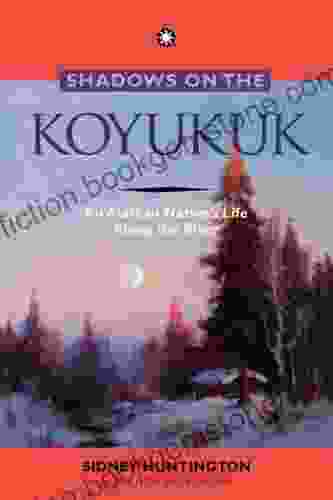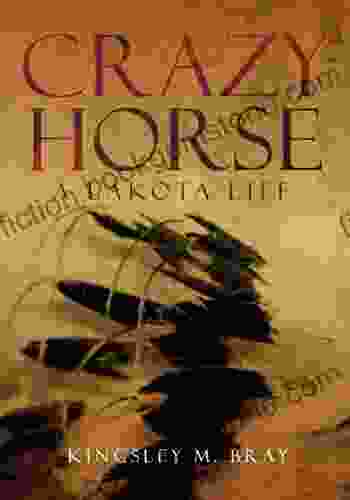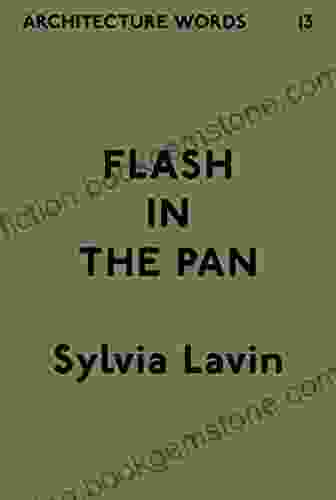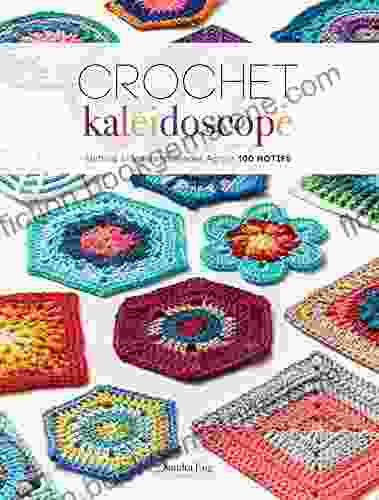Performing Arts in Transition: Navigating the Digital Divide and Reimagining the Live Experience

The performing arts have been undergoing a significant transformation in recent years, with the rise of digital technology and the challenges posed by the COVID-19 pandemic. These changes have forced artists and organizations to rethink the way they create, perform, and engage with audiences.
One of the most significant changes has been the rise of digital technology. Virtual reality (VR) and augmented reality (AR) are now being used to create immersive experiences that can transport audiences to different worlds. For example, the Royal Opera House in London has created a VR experience that allows users to explore the opera house and watch performances from the best seats in the house.
Digital technology is also being used to create new forms of performance. For example, the Dutch theater company Hotel Modern has created a performance called "Remote Amsterdam," which takes place entirely online. The audience watches the performance through a webcam and can interact with the performers in real time.
5 out of 5
| Language | : | English |
| File size | : | 3173 KB |
| Text-to-Speech | : | Enabled |
| Screen Reader | : | Supported |
| Enhanced typesetting | : | Enabled |
| Word Wise | : | Enabled |
| Print length | : | 273 pages |
The COVID-19 pandemic has also had a major impact on the performing arts. With theaters and concert halls closed, artists have had to find new ways to reach their audiences. Many have turned to online streaming, but this has not been without its challenges.
One of the biggest challenges of streaming performances is the lack of live interaction between performers and audiences. This is especially important in the performing arts, where the energy and connection between performers and audiences is essential.
Another challenge is the technical difficulty of streaming performances. It can be difficult to ensure that the audio and video quality is good enough for audiences to enjoy the performance.
Despite these challenges, streaming has also provided some opportunities for the performing arts. It has allowed artists to reach audiences that they would not have been able to reach before. For example, the Metropolitan Opera in New York has been streaming its performances to audiences around the world, reaching millions of people who would not have been able to attend a live performance.
The performing arts are still in transition, and it is not yet clear what the future holds. However, it is clear that digital technology will play a major role in the future of the performing arts. Artists and organizations will need to find ways to embrace digital technology while still preserving the essence of live performance.
The Impact of Digital Technology on Artists
The rise of digital technology has had a significant impact on artists. On the one hand, it has provided them with new tools and opportunities to create and share their work. On the other hand, it has also created new challenges, such as the need to adapt to new technologies and the increased competition for audiences.
One of the most significant ways that digital technology has impacted artists is by providing them with new tools and opportunities to create their work. For example, digital technology has made it possible for artists to create immersive experiences that can transport audiences to different worlds. It has also made it possible for artists to collaborate with each other more easily, regardless of their location.
Digital technology has also created new opportunities for artists to share their work with audiences. For example, artists can now share their work on social media, which allows them to reach a much wider audience than they would have been able to reach before.
However, the rise of digital technology has also created some new challenges for artists. One of the biggest challenges is the need to adapt to new technologies. Artists need to be able to learn how to use new software and hardware in order to create their work. They also need to be able to adapt to the changing demands of audiences.
Another challenge that artists face is the increased competition for audiences. With so much content available online, it can be difficult for artists to stand out from the crowd. Artists need to be able to create work that is unique and compelling in order to attract and retain audiences.
The Impact of Digital Technology on Audiences
The rise of digital technology has also had a significant impact on audiences. On the one hand, it has made it easier for audiences to access and enjoy the performing arts. On the other hand, it has also created some new challenges, such as the need to adapt to new technologies and the increased amount of choice.
One of the most significant ways that digital technology has impacted audiences is by making it easier for them to access and enjoy the performing arts. For example, streaming services have made it possible for audiences to watch performances from around the world, regardless of their location.
Digital technology has also created new opportunities for audiences to interact with artists and other audience members. For example, social media can be used to create online communities where audiences can discuss performances and share their thoughts and experiences.
However, the rise of digital technology has also created some new challenges for audiences. One of the biggest challenges is the need to adapt to new technologies. Audiences need to be able to learn how to use new devices and software in order to access and enjoy the performing arts.
Another challenge that audiences face is the increased amount of choice. With so much content available online, it can be difficult for audiences to decide what to watch. Audiences need to be able to find and select content that is relevant to their interests and needs.
The Future of the Performing Arts
The future of the performing arts is uncertain, but it is clear that digital technology will play a major role. Artists and organizations will need to find ways to embrace digital technology while still preserving the essence of live performance.
One way that artists and organizations can embrace digital technology is by using it to create new and innovative experiences. For example, artists could use VR and AR to create immersive experiences that transport audiences to different worlds. They could also use digital technology to create interactive performances that allow audiences to participate in the performance.
Another way that artists and organizations can embrace digital technology is by using it to reach new audiences. For example, artists could use social media to connect with audiences around the world. They could also use streaming services to make their performances available to a wider audience.
However, it is important to note that digital technology is not a replacement for live performance. There is something special about the experience of seeing a live performance that cannot be replicated online. Artists and organizations need to find ways to use digital technology to enhance the live experience, not replace it.
The future of the performing arts is bright. With the help of digital technology, artists and organizations can create new and innovative experiences that will engage and inspire audiences for years to come.
5 out of 5
| Language | : | English |
| File size | : | 3173 KB |
| Text-to-Speech | : | Enabled |
| Screen Reader | : | Supported |
| Enhanced typesetting | : | Enabled |
| Word Wise | : | Enabled |
| Print length | : | 273 pages |
Do you want to contribute by writing guest posts on this blog?
Please contact us and send us a resume of previous articles that you have written.
 Best Book
Best Book Page Flip
Page Flip Bookshelf
Bookshelf Literary loom
Literary loom Chapter
Chapter Bookish
Bookish PageTurner
PageTurner Bibliophile
Bibliophile Story
Story Inkwell
Inkwell Bookworm
Bookworm Labyrinth
Labyrinth Plot Twist
Plot Twist Prose
Prose Paperback
Paperback Storyteller
Storyteller Sanctuary
Sanctuary Fiction
Fiction Reading
Reading Chronicle
Chronicle Read
Read Charles Martin
Charles Martin William Bennet Stevenson
William Bennet Stevenson Margaret Bunson
Margaret Bunson Bruce Larson
Bruce Larson Hans Ulrich Obrist
Hans Ulrich Obrist Thomas Hope
Thomas Hope Tracy Osborn
Tracy Osborn Kenneth Cline
Kenneth Cline Steven Howell
Steven Howell Dov S S Simens
Dov S S Simens Allan Zola Kronzek
Allan Zola Kronzek Rudy Wiebe
Rudy Wiebe Gordon K Hirabayashi
Gordon K Hirabayashi Gerry Souter
Gerry Souter Amanda Hislop
Amanda Hislop James Rollins
James Rollins Douglas Johnson
Douglas Johnson Suzie Mackenzie
Suzie Mackenzie Ashley Niedringhaus
Ashley Niedringhaus Alphonso Brown
Alphonso Brown Johanna Garton
Johanna Garton Glyn Macey
Glyn Macey Amor Fenn
Amor Fenn Michael D Pitt
Michael D Pitt Alice Henderson
Alice Henderson Raul Caceres M D
Raul Caceres M D David Larson
David Larson Alexandra Fuller
Alexandra Fuller W J Lundy
W J Lundy Alistair Mcguinness
Alistair Mcguinness John H Cunningham
John H Cunningham Laquette
Laquette Amber Easby
Amber Easby Allison Branscombe
Allison Branscombe Tiffani Goff
Tiffani Goff K Gorman
K Gorman Marguerite Penrose
Marguerite Penrose Johan Huizinga
Johan Huizinga Dreamstorm Publications
Dreamstorm Publications Krista Luna
Krista Luna Meredith Hall
Meredith Hall Dara Mcanulty
Dara Mcanulty Jo Weldon
Jo Weldon Alexander Von Humboldt
Alexander Von Humboldt Lindsay Ellis
Lindsay Ellis Sachiko Toyozato
Sachiko Toyozato Nicole Lynn
Nicole Lynn Allan Neuwirth
Allan Neuwirth Terry Gilliam
Terry Gilliam Alexandra Warren
Alexandra Warren Nigel Randell
Nigel Randell Kimberly Brown
Kimberly Brown Amit Offir
Amit Offir Murray Stewart
Murray Stewart Arlen Gargagliano
Arlen Gargagliano Allen Rucker
Allen Rucker Grayson Sinclair
Grayson Sinclair Dee Brown
Dee Brown Paul Adams
Paul Adams T E Bakutis
T E Bakutis Rysa Walker
Rysa Walker Rana Mitter
Rana Mitter Alexander H Rosenberg
Alexander H Rosenberg Bas Bakker
Bas Bakker Hazel Soan
Hazel Soan Yoshiko Uchida
Yoshiko Uchida Alida Nugent
Alida Nugent Allan Haley
Allan Haley Gini Koch
Gini Koch Peter Lane
Peter Lane Alicia Malone
Alicia Malone Lianne Dillsworth
Lianne Dillsworth Fay Simpson
Fay Simpson Tom Heintjes
Tom Heintjes Alistair Maclean
Alistair Maclean Karine Jean Pierre
Karine Jean Pierre Amy M Davis
Amy M Davis R D Brady
R D Brady Robert Chick
Robert Chick Alyssa Campbell
Alyssa Campbell Alicia Beckton
Alicia Beckton Allie Allen
Allie Allen Jeff Chenault
Jeff Chenault Alexander Bennett
Alexander Bennett Eva Taylor
Eva Taylor Alfred Gell
Alfred Gell Alexander Sergeant
Alexander Sergeant Mz Lady P
Mz Lady P Maxwell Ayrton
Maxwell Ayrton Andre Gonzalez
Andre Gonzalez Elamin Abdelmahmoud
Elamin Abdelmahmoud Anna Viroubova
Anna Viroubova Hitomi Shida
Hitomi Shida Eleanor Roosevelt
Eleanor Roosevelt Edd Staton
Edd Staton Matthew Gabriele
Matthew Gabriele Rachel Rhys
Rachel Rhys Alexis Schlegel
Alexis Schlegel Brynne Asher
Brynne Asher Carol Belanger Grafton
Carol Belanger Grafton Jessica Fishman
Jessica Fishman Elizabeth Taylor
Elizabeth Taylor Anchee Min
Anchee Min Peter Egan
Peter Egan Andrea Coke
Andrea Coke Amaya Black
Amaya Black Kenneth E Hall
Kenneth E Hall Amy Burkert
Amy Burkert Stephen Michael Shearer
Stephen Michael Shearer Bill Cunningham
Bill Cunningham Masa Seikou
Masa Seikou Nancy Jooyoun Kim
Nancy Jooyoun Kim C Vann Woodward
C Vann Woodward Amelia Pang
Amelia Pang Alison Freer
Alison Freer Lauren Wilkinson
Lauren Wilkinson George Puckett
George Puckett Allegra Kent
Allegra Kent Christopher Hopper
Christopher Hopper Lucia Peters
Lucia Peters Simon J Hall
Simon J Hall Sharon Lee
Sharon Lee Robyn Davidson
Robyn Davidson Warren Kozak
Warren Kozak Alexander Monro
Alexander Monro Alyson Belle
Alyson Belle Levi Zelkind
Levi Zelkind Christopher Bolton
Christopher Bolton Esi Edugyan
Esi Edugyan Alyssa Shelasky
Alyssa Shelasky Alice Walker
Alice Walker Alexandra Sokoloff
Alexandra Sokoloff Alice Wong
Alice Wong Kindle Edition
Kindle Edition Pauli Murray
Pauli Murray Colleen Hoover
Colleen Hoover Allison Alexander
Allison Alexander M M Kaye
M M Kaye Arlo Quinn
Arlo Quinn Rod Reynolds
Rod Reynolds Stan Grant
Stan Grant E J Fleming
E J Fleming Allison Hong Merrill
Allison Hong Merrill Michael Pronko
Michael Pronko Parker J Cole
Parker J Cole Mike Fu
Mike Fu Alfred Bester
Alfred Bester Margaret Winslow
Margaret Winslow Lalita Tademy
Lalita Tademy Erik Weihenmayer
Erik Weihenmayer Christine Chitnis
Christine Chitnis Jonathan Gardiner
Jonathan Gardiner Allison Murray
Allison Murray Andrew Gillsmith
Andrew Gillsmith Jared Mandani
Jared Mandani Amy Odell
Amy Odell Alfred Russel Wallace
Alfred Russel Wallace Alice Hoffman
Alice Hoffman Chanel Cleeton
Chanel Cleeton Will Dodson
Will Dodson Barbara Hambly
Barbara Hambly Mark De Silva
Mark De Silva America Ferrera
America Ferrera Aminah Smith
Aminah Smith Jan Dalley
Jan Dalley Anna Mason
Anna Mason Jenny Handy
Jenny Handy Alina Wheeler
Alina Wheeler Lance Richardson
Lance Richardson Amy Poehler
Amy Poehler Jim Stott
Jim Stott Alexander Weinstein
Alexander Weinstein Amin Maalouf
Amin Maalouf Alyn Shipton
Alyn Shipton Eric Flint
Eric Flint Minerva Peters
Minerva Peters Jamie Ibson
Jamie Ibson Christopher Finch
Christopher Finch Jeff A Menges
Jeff A Menges International Learning Academy
International Learning Academy Robb Pearlman
Robb Pearlman Boye Lafayette De Mente
Boye Lafayette De Mente Kevin Steverson
Kevin Steverson Brandon Sanderson
Brandon Sanderson Emily Crafts
Emily Crafts Montana Hodges
Montana Hodges Amy Mckinley
Amy Mckinley Theresa Goodrich
Theresa Goodrich Thomas Powers
Thomas Powers Megan Massacre
Megan Massacre Alexandra Garbarini
Alexandra Garbarini Eve Vaughn
Eve Vaughn Jeff Greenwald
Jeff Greenwald Dianne Duvall
Dianne Duvall Nickey Knighton
Nickey Knighton Amy Butler
Amy Butler Jerry Pournelle
Jerry Pournelle Reese Patton
Reese Patton Lan Yan
Lan Yan Amanda J Spedding
Amanda J Spedding Justin Eisinger
Justin Eisinger Liza Gershman
Liza Gershman Hazel V Carby
Hazel V Carby Amira Hass
Amira Hass Cormac Mccarthy
Cormac Mccarthy Alice Albinia
Alice Albinia Deidre M Pike
Deidre M Pike Peter L Winkler
Peter L Winkler Vito Adriaensens
Vito Adriaensens Grahame Booth
Grahame Booth Patrick Devaney
Patrick Devaney Bob Reynolds
Bob Reynolds Amber Ruffin
Amber Ruffin Alison King
Alison King Anand Pandian
Anand Pandian Alison Lee
Alison Lee Helen Freeman
Helen Freeman Duncan M Hamilton
Duncan M Hamilton Simon Goldhill
Simon Goldhill William C Dietz
William C Dietz Amanda Kuster
Amanda Kuster Allison Markin Powell
Allison Markin Powell Amanda Bouchet
Amanda Bouchet John Varley
John Varley Alyona Nickelsen
Alyona Nickelsen John Jackson Miller
John Jackson Miller Beth Brown Reinsel
Beth Brown Reinsel Margery Leveen Sher
Margery Leveen Sher Alexander Mackenzie
Alexander Mackenzie Attica Locke
Attica Locke Andre Norton
Andre Norton Yolanda Lopez
Yolanda Lopez Alexander Speltz
Alexander Speltz Ana Victoria Calderon
Ana Victoria Calderon Alun Anderson
Alun Anderson Tiye Love
Tiye Love J A Konrath
J A Konrath Harriet Denison
Harriet Denison Kingsley M Bray
Kingsley M Bray Alicia Hall
Alicia Hall Ortrun Egelkraut
Ortrun Egelkraut Jason Vachon
Jason Vachon Lisa Pietsch
Lisa Pietsch Karin Tidbeck
Karin Tidbeck Raine Thomas
Raine Thomas Winifred Aldrich
Winifred Aldrich Alfred Habegger
Alfred Habegger Jesse Fox
Jesse Fox Alison Weir
Alison Weir Jennifer Saginor
Jennifer Saginor Kenji Yoshino
Kenji Yoshino Robert Blumenfeld
Robert Blumenfeld Vijay Kumar
Vijay Kumar Stephen Mason
Stephen Mason Helen Mcginn
Helen Mcginn Anders De La Motte
Anders De La Motte Robert J Sawyer
Robert J Sawyer Amir Eshel
Amir Eshel Amaryllis Fox
Amaryllis Fox Ross Gay
Ross Gay Anthony Galvin
Anthony Galvin Guy Wann
Guy Wann Ali Dowlatshahi
Ali Dowlatshahi Allan A Macfarlan
Allan A Macfarlan Burne Hogarth
Burne Hogarth Katrina Jackson
Katrina Jackson Bern Will Brown
Bern Will Brown Karrine Steffans
Karrine Steffans Charles Evans
Charles Evans Gabriella Catalano
Gabriella Catalano Tessa Dare
Tessa Dare Kimberly Adams
Kimberly Adams Aliette De Bodard
Aliette De Bodard Michael Powell
Michael Powell Tim Rock
Tim Rock Christie Golden
Christie Golden Hunter Biden
Hunter Biden Anand Prahlad
Anand Prahlad Theresa Weir
Theresa Weir Sidney Huntington
Sidney Huntington Christina Ezrahi
Christina Ezrahi Frances F Dunwell
Frances F Dunwell Alexandria House
Alexandria House E M Foner
E M Foner Alexandra Silber
Alexandra Silber Alexandre Roger
Alexandre Roger Paul Tremblay
Paul Tremblay Kimberly Chrisman Campbell
Kimberly Chrisman Campbell Amanda Barnes
Amanda Barnes Kate Field
Kate Field Alfred Hitchcock
Alfred Hitchcock Ly Tran
Ly Tran Amanda Vanever
Amanda Vanever Ali Bey
Ali Bey Alwyn Crawshaw
Alwyn Crawshaw Terry Schott
Terry Schott Amanda Brooks
Amanda Brooks Allan Ira Bass
Allan Ira Bass Oleg Atbashian
Oleg Atbashian Allan R Ellenberger
Allan R Ellenberger M Gaspary
M Gaspary Brad Prager
Brad Prager Faya Causey
Faya Causey Bill Zarchy
Bill Zarchy Amaka Samrah Linus
Amaka Samrah Linus Ma Jian
Ma Jian Kenny Roy
Kenny Roy John Steinbeck
John Steinbeck Cap Daniels
Cap Daniels Sherilyn Connelly
Sherilyn Connelly Lan Sluder
Lan Sluder Phil Huddleston
Phil Huddleston Wolfedale Press
Wolfedale Press David Bergsland
David Bergsland Andra Bucci
Andra Bucci John Bester
John Bester Grace M Cho
Grace M Cho Tom Miller
Tom Miller Navid Kermani
Navid Kermani Jade Asikiwe
Jade Asikiwe Dale Sattler
Dale Sattler Alistair Moffat
Alistair Moffat M E Thorne
M E Thorne Iwao Takamoto
Iwao Takamoto Casey Watson
Casey Watson Amanda B Cosgrove
Amanda B Cosgrove Stephen Birmingham
Stephen Birmingham Ronni L Gordon
Ronni L Gordon Sally K May
Sally K May Calum Waddell
Calum Waddell Alvaro Castagnet
Alvaro Castagnet Leticia Ordaz
Leticia Ordaz G Michael Dobbs
G Michael Dobbs Bethany Robertson
Bethany Robertson Samira Shackle
Samira Shackle Lydia Sloan Cline
Lydia Sloan Cline Amy B Scher
Amy B Scher Martin Gayford
Martin Gayford Jeandre Gerber
Jeandre Gerber Christopher Golden
Christopher Golden Rabindranath Tagore
Rabindranath Tagore I O Adler
I O Adler Ammianus Marcellinus
Ammianus Marcellinus Joshua Jelly Schapiro
Joshua Jelly Schapiro Alison Lumbatis
Alison Lumbatis Elmore Leonard
Elmore Leonard Emily Ratajkowski
Emily Ratajkowski Margaret B Blackman
Margaret B Blackman Alexander Armstrong
Alexander Armstrong Seth Emerson
Seth Emerson Alexey Osadchuk
Alexey Osadchuk Christopher Lee Philips
Christopher Lee Philips Amber Brock
Amber Brock L Smith
L Smith Amy Kuivalainen
Amy Kuivalainen Susan Elizabeth Phillips
Susan Elizabeth Phillips Amanda Vaill
Amanda Vaill Amy Chavez
Amy Chavez Amy S F Lutz
Amy S F Lutz Studio Atelier 21
Studio Atelier 21 Allan Kaster
Allan Kaster Richard Price
Richard Price Rukmini Vijayakumar
Rukmini Vijayakumar Ian Anderson
Ian Anderson Alexander Frater
Alexander Frater Joshua Jay
Joshua Jay Alison Ross
Alison Ross Michael V Hayden
Michael V Hayden Andie Powers
Andie Powers Kayla Allen
Kayla Allen Alexandra Shulman
Alexandra Shulman Alia Thabit
Alia Thabit Richard Bell
Richard Bell Alma Nilsson
Alma Nilsson Kevin Hearne
Kevin Hearne Ali Duffy
Ali Duffy Paul Doty
Paul Doty Chris Vines
Chris Vines Julia Quinn
Julia Quinn Derek Pardue
Derek Pardue Mark Edlitz
Mark Edlitz Chris Peterson
Chris Peterson William D Crump
William D Crump Karen Falk
Karen Falk Rosi Jarussi
Rosi Jarussi Francis A Schaeffer
Francis A Schaeffer Victor Villasenor
Victor Villasenor Rahna Reiko Rizzuto
Rahna Reiko Rizzuto Jesmyn Ward
Jesmyn Ward Peter Cronin
Peter Cronin L A Braun
L A Braun Jade Blue
Jade Blue Hisham Matar
Hisham Matar Ronald Florence
Ronald Florence Alice Procter
Alice Procter Amanda Milo
Amanda Milo Johannes Vloothuis
Johannes Vloothuis Alois Senefelder
Alois Senefelder Allison Brennan
Allison Brennan Thomas Sanchez
Thomas Sanchez Maureen Paton
Maureen Paton Amihan Balasabas
Amihan Balasabas Terry Mcmillan
Terry Mcmillan Michelle Elaine
Michelle Elaine Peter Schiessl
Peter Schiessl Jessi Klein
Jessi Klein Pamela Spiro Wagner
Pamela Spiro Wagner Amelia Jones
Amelia Jones Amanda Grange
Amanda Grange Patricia Konczynski Jennifer Herbst
Patricia Konczynski Jennifer Herbst W E B Griffin
W E B Griffin Dave Jay
Dave Jay Joyce Hicks
Joyce Hicks G P Hudson
G P Hudson Steven Awalt
Steven Awalt Anne M Scott
Anne M Scott Aline Ash
Aline Ash Clary Illian
Clary Illian Laura Dave
Laura Dave Robert Pringle
Robert Pringle Emily Grabatin
Emily Grabatin J N Chaney
J N Chaney Robert K Massie
Robert K Massie Peter Bacho
Peter Bacho Bill Yenne
Bill Yenne Kathryn Cramer
Kathryn Cramer Amanda Leduc
Amanda Leduc
Light bulbAdvertise smarter! Our strategic ad space ensures maximum exposure. Reserve your spot today!
 Leo TolstoyFollow ·6.8k
Leo TolstoyFollow ·6.8k Maurice ParkerFollow ·11.5k
Maurice ParkerFollow ·11.5k Jerry HayesFollow ·18.4k
Jerry HayesFollow ·18.4k Boris PasternakFollow ·11.7k
Boris PasternakFollow ·11.7k Wesley ReedFollow ·16.2k
Wesley ReedFollow ·16.2k Gerald ParkerFollow ·11.2k
Gerald ParkerFollow ·11.2k Adrien BlairFollow ·7.5k
Adrien BlairFollow ·7.5k Albert CamusFollow ·11.7k
Albert CamusFollow ·11.7k
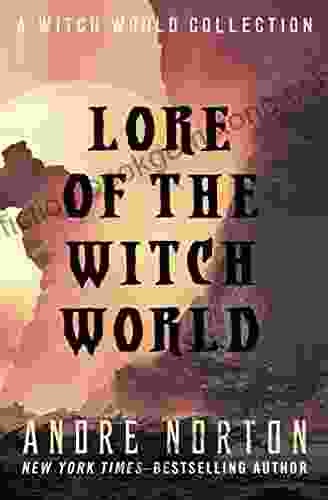
 Kyle Powell
Kyle PowellThe Enchanting Realms of Witch World: A Collector's Guide...
In the vast and...

 Ethan Mitchell
Ethan MitchellSwap Night on Union Station EarthCent Ambassador 19: A...
On a crisp autumn evening in the...

 Gage Hayes
Gage HayesThe Last Reaper: A Military SciFi Epic That Will Leave...
The Last Reaper...

 Christopher Woods
Christopher WoodsUnveiling the Masterpiece: The Original Pattern Bible by...
In the realm of pattern design, there...
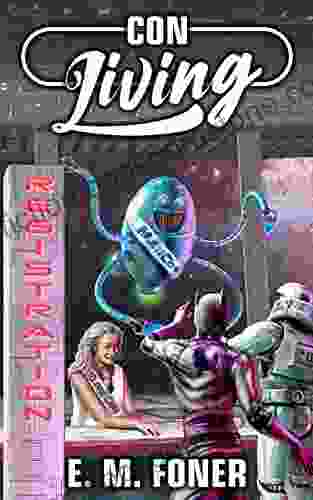
 William Golding
William GoldingDiscover the Unfathomable Con Living Earthcent Universe:...
An Expansive Cosmic Tapestry In the...
5 out of 5
| Language | : | English |
| File size | : | 3173 KB |
| Text-to-Speech | : | Enabled |
| Screen Reader | : | Supported |
| Enhanced typesetting | : | Enabled |
| Word Wise | : | Enabled |
| Print length | : | 273 pages |



